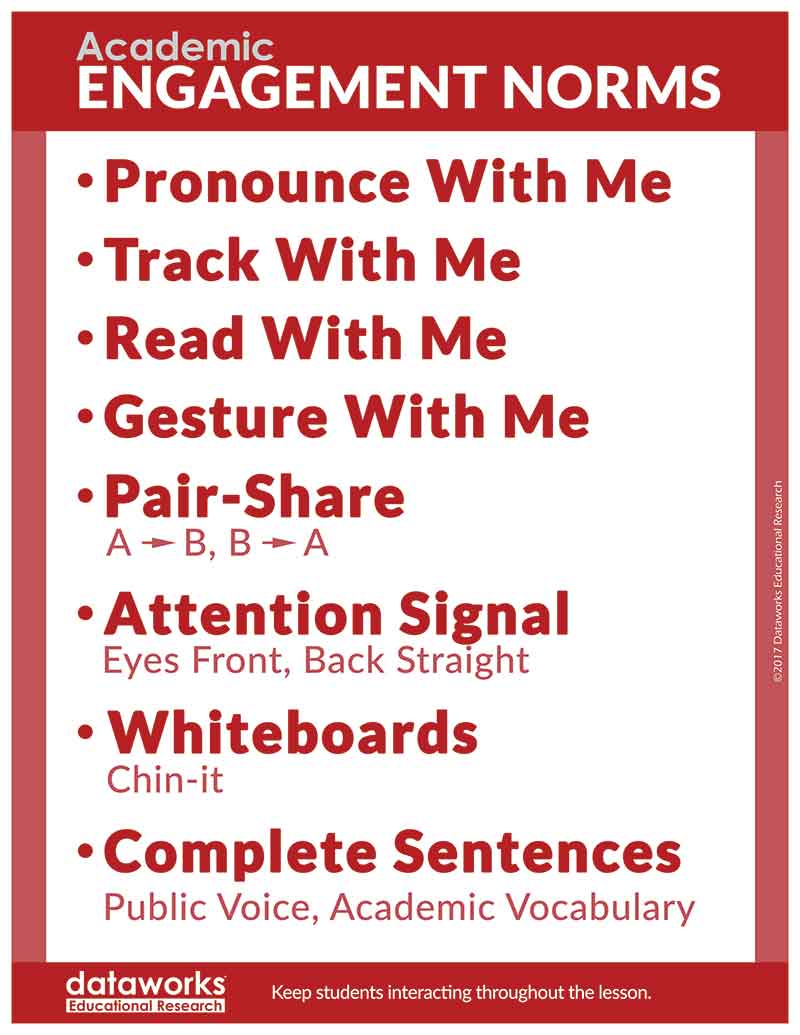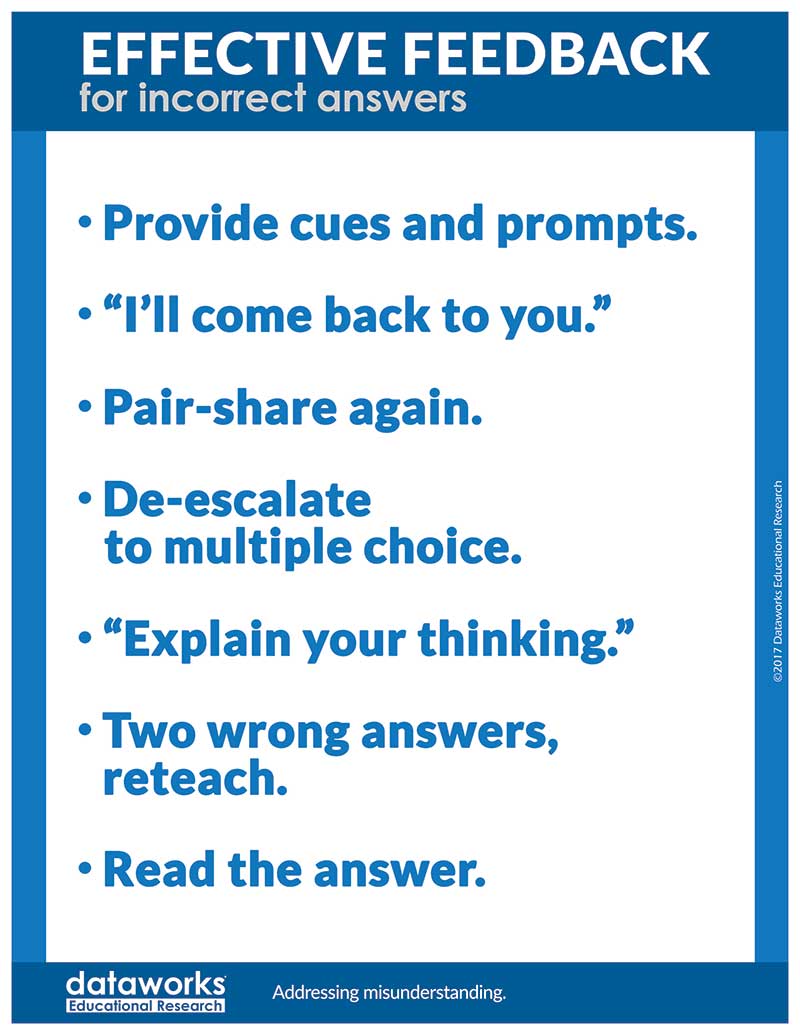
How to Differentiate and Scaffold - while teaching
Plan for success during the lesson
In a prior blog, we talked about differentiating and scaffolding when designing lessons. Differentiation refers to the idea of modifying instruction to meet a student’s individual needs and learning styles. Scaffolding refers to modifications you make while designing and teaching lessons that allow all students to be successful in learning the same content.
This time we’ll cover some strategies for differentiating and scaffolding while teaching.
As part of the Explicit Direct Instruction (EDI) model, DataWORKS developed Academic Engagement Norms. The Norms are used throughout lessons to teach content to students. Use them all the time. For example, pronounce difficult words for students. Use tracked reading for the text in the lesson. You pre-read difficult text (while student look at the words), and then have students read chorally after you. These processes scaffold every lesson and help improve students’ reading ability.
Pair-share is one of the most important Academic Engagement Norms. Direct your students to pair-share every question and then to respond in complete sentences. Provide a sentence frame before the pair-share that contains academic vocabulary from the lesson for students to use in forming their complete sentence responses.
Use Checking for Understanding while teaching
Explicit Direct Instruction includes extensive Checking for Understanding questions throughout every lesson. You differentiate and modify your teaching — speed up, slow down, or reteach — according to your students’ responses to your Checking for Understanding questions.
Your students’ ability to answer CFU questions, not the clock or the pacing calendar, determines the true pace of a lesson.
Resist the temptation to try to speed through a lesson when students aren’t learning, or else students won’t be successful during Independent Practice or later when tested.
Differentiation to improve student responses
Be ready to use Effective Feedback strategies to support students in successfully answering Checking for Understanding questions.
Your goal is to call on random students and have every one provide a correct answer. Students are never allowed not to know the answer. If they can’t answer, you differentiate by providing Effective Feedback. Some strategies as shown on the poster include announcing “I’ll come back to you,” calling on other students, and then returning to the original student. You can rephrase open-ended questions to multiple choice questions. Students will often self-correct when asked to explain how they got their answer. If two students in a row can’t answer, re-teach the whole class. Then call on the original students again.
Next time we’ll talk about differentiation and scaffolding after the lesson is over, including modifications for lesson Closure, Independent Practice, and using RTI afterwards.
Explicit Direct Instruction helps all students. Download this document to learn more about our EDI Professional Development.





